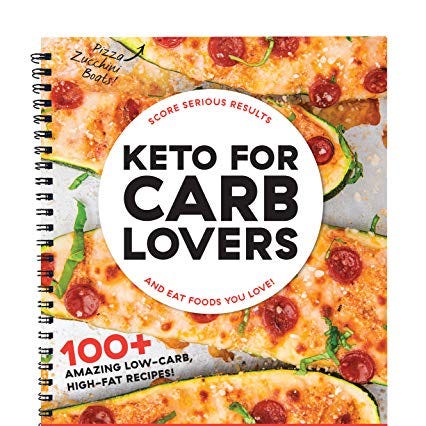Keto Diet How to Count Fat
All you really need to now about the keto diet is fat equals good, carbs equals bad...right?
If only. While, yes, the keto diet focuses on keeping your daily carb intake low and boosting the good fats in your diet, it can get a little more complicated than that—especially if you're following the keto diet to a T and, you know, actually counting your keto macros—a.k.a. how many grams of carbs, fats, and protein you get each day.
TBH, counting your macros is hard regardless of the eating plan (math, amiright??), but it gets even more complicated when your entire diet depends on it (too many carbs and not enough fat means no ketosis—and less weight loss).
Here's how to break down your keto macros, so you have the best chance of seeing those sweet, sweet keto diet results.
So what do macros on the keto diet look like?
Real talk: Hard numbers or percentages on the keto diet are tricky because there are so many differing opinions about the "right way" to do keto, and little research to back up the varying methods, says J. Wesley McWhorter, a registered dietitian at UTHealth School of Public Health in Houston. "Keto diets have morphed into a variety of macro levels with ranges of up to 20 percent carbohydrates, 10 to 30 percent protein, and 50 to 90 percent fat."
Okay, but how does that break down in grams of protein, fat, and carbs?
There's a simple equation to help you figure out how many grams of carbs you should be eating on, say, a 1,600-calorie-a-day keto diet, but first you need to know that:
- Carbs have four calories per gram.
- Fat has nine calories per gram
- Protein has four calories per gram.
Let's also say you're aiming for a standard keto diet of 10 percent carbs—"which is low enough for most people to get into nutritional ketosis," says Amanda Maucere, a registered dietitian nutritionist at Lung Health Institute in Tampa, Florida—20 percent protein, and 70 percent fat.
Just use these simple equations to figure out how many grams of carbs, protein, and fat you should be aiming for:
- Carbs: Calories per day (1,600) x percentage of calories from carbs (.10) / Number of calories per gram in carbohydrates (4) = 40 grams of carbs per day
- Protein: Calories per day (1,600) x percentage of calories from protein (.20) / Number of calories per gram in protein (4) = 80 grams of protein per day
- Fat: Calories per day (1,600) x percentage of calories from fat (.70) / Number of calories per gram in fat (9) = 125 grams of fat per day
This content is imported from {embed-name}. You may be able to find the same content in another format, or you may be able to find more information, at their web site.
Tracking your carbs is likely the most important part of the keto diet—but you can have a little more flexibility when it comes to your protein and fat macros.
When it comes to your protein intake, in general, it's a good rule to eat about half of your ideal body weight, says Maucere. "For example, if you feel your best at 150 pounds, you'd want to eat around 75 grams of protein a day," she says (which, tbh, is very close to the 80 grams of protein you'd get from the equation above).

The rest of your diet should consist mainly of fats, but even that varies based on your energy needs, says Maucere. "I typically tell my patients to eat enough fat to feel satiated between meals," she adds. For some, that might mean far less than the 125 grams of fat per day calculated above.
That's...a lot of math. Is there an easier way to keep track of this?
I get it; tallying all those grams and percentages can get a bit daunting (no one said there'd be math on this portion of the test!). You can try apps like Cron-o-meter (Maucere's favorite), old school notebooks, etc. But remember: "The best method of tracking macros is always going to be the one you can commit to and stick to on a regular basis," says Jen Oikarinen, a registered dietician and clinical dietitian at Banner University Medical Center in Phoenix.
If counting is really not your jam, you can also just eyeball your macros: "A typical keto plate would have a palm-sized portion of meat, one or two fistfuls of vegetables, and as much fat as you need to achieve satiety," says Maucere. To figure out what satiety looks like for you, she suggests going with one or two thumb-sized portions of fat to start and building from there. "So, a meal may look like a small piece of steak with a good-sized portion of green beans and chopped walnuts."
Of course, even more important than counting your keto macros, McWhorter says, is paying attention to the quality of food you put in your body. "Even if you hit your 'macro goals,' but you are not including fruits, vegetables, legumes, nuts, seeds, and whole grains, you could be in trouble." Remember that all of these food groups are full of fiber and beneficial in fighting diabetes, cardiovascular disease, and promoting satiety and weight control.
Nicole Blades Nicole Blades is a novelist, speaker, and freelance journalist who covers women's health, race and culture, books and publishing, and stories of reinvention for various national print and digital magazines.
This content is created and maintained by a third party, and imported onto this page to help users provide their email addresses. You may be able to find more information about this and similar content at piano.io
Source: https://www.womenshealthmag.com/weight-loss/a27377563/keto-diet-macros/